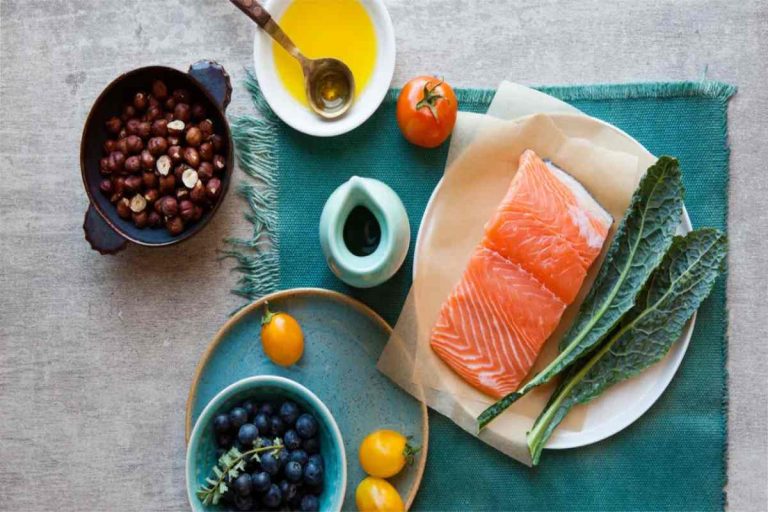If you struggle with depression or anxiety, you may not yet have heard that the food you eat can have a big impact. Eating certain foods can make rising from depression more difficult while focusing on other foods can help lighten your load. Furthermore, it’s not just the meals you prepare and eat, it’s your relationship with food and your body that can improve your mood. Here are some tips to follow to start heading in the right direction.
Table of Contents
1. Consistency Is Key
One of the biggest factors around changing your diet to improve your mood is consistency. For many people, having an “anything goes” approach to the way you eat can be detrimental to the way you feel. You can find yourself slipping into bad eating habits that leave you feeling sluggish and sad. Before you know it, you’re spiraling downward, and you feel you have no recourse. If you are in a dark place now, consider contacting a mental health rehab for help.
As you pull yourself out of the darkness, a consistent diet can be a rung on the ladder. Make healthy foods available to you — in your house, at work, and in your car — so you’re less likely to slip up. Create a meal plan for your daily and weekly meals you can rely on to nourish you and prevent you from reaching for junk food that will make you feel bad. Consistency is critical to positive mental health, so aim for a predictable diet most days of the week.
2. Know Yourself and Set Yourself Up for Success
A large part of creating consistency is learning to get to know yourself, what you’re willing to do, and what you know you won’t do. As you work to improve your mood, pull yourself out, and keep yourself out of depression, you want to set yourself up for success. So, don’t expect yourself to make crazy, extreme changes overnight and stick to them. If you hate mushrooms, onions, or fish, for example, don’t integrate them into your diet.
Instead, build meals around foods you enjoy that you know are healthy. This way, you’ll be more likely to stick to the changes. Think of the fruits and vegetables you do like, which lean proteins you enjoy most, and which healthy fats you will eat. Now, build meals around those foods, and you can slowly start to introduce new healthy foods you are willing to try. The more slowly you make these changes, the easier it will be to stick to the diet, and the happier you are likely to be.
3. Understand Happy Foods
Speaking of happiness, there are actual happy foods that you can integrate into your diet daily. These happy foods turn on the neurotransmitters dopamine and serotonin in your brain, which are your happiness chemicals. Foods rich in tryptophan, protein, omega-3s, and vitamin B12 all speak to your brain to increase those happiness chemicals. The more you can introduce into your meals, the more help you will have to stave off depression.
The nice thing is that many foods that have one of these critical elements also have one or two others. For example, lean meats like fish and poultry have protein and tryptophan. Fatty fish like sardines and salmon are also high in Omega-3s. Eggs, nuts, and seeds are high in vitamin B12 and include essential proteins. It’s also a good idea to incorporate foods high in antioxidants, like leafy greens and berries, which have been shown to reduce symptoms of depression.
4. Minimize Highly Processed and Refined Sugar Foods
Now, while you’re building nutritious meals filled with happy foods, you also want to cut out foods that contribute to depression. Highly processed foods like bags of chips, candy, or packaged snacks may lead to increased inflammation in your body. Inflammation in the body has been linked to an increase in depression symptoms. So minimize these foods as much as you can, and swap them out for a healthier snack.
The same is true of refined sugar products like candy, soda, and packaged baked goods. These foods can contribute to spikes in your blood sugar, which then result in a blood sugar crash. This crash can leave you feeling fatigued and, for those with depressive disorders, depressed. Instead of soda, try sparkling water. And instead of packaged muffins, bake something with your family using healthy ingredients. The food and the shared experience can be a mood booster!
5. Exercise Regularly
Finally, while this tip is not directly related to creating nutritious meals, regular exercise is indeed a mood booster. Furthermore, you are less likely to reach for depression foods after a brisk walk, a hike through nature, or a bike ride. Instead, you’re more likely going to want something healthy to support your movement. Also, you’ll want foods that help you maintain your energy levels while you move rather than those that weigh you down.
Another note on the relationship between food and exercise is that if you take a walk after you eat, you can help control blood sugar spikes. Controlling those spikes means controlling crashes, which helps stave off depression. So, have a healthy meal with proteins, omega-3s, and antioxidants, and then take a 30-minute walk. That way, you’re boosting your mood through food and exercise. It’s a double whammy against depression.
In the end, there are many steps you can take to create nutritious depression meals. Many of those steps have to do with understanding both food and yourself. The last thing you want is to send yourself into a shame spiral over not eating well. Be kind and compassionate with yourself as you integrate better eating habits and work toward positive mental health. Take baby steps, and remember that you, like everyone else, are a work in progress.


